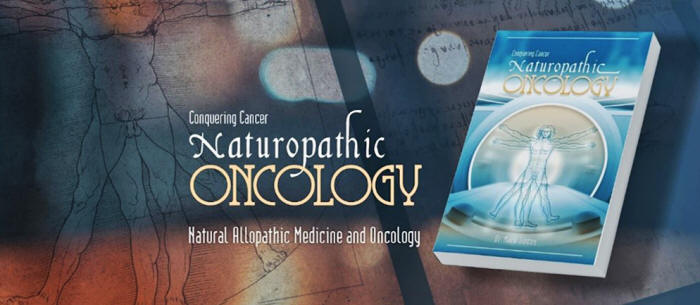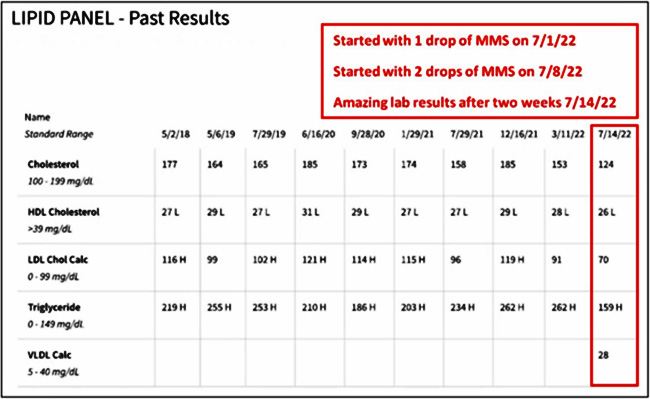|
by Dr. Mark Sircus
from
DrSircus Website
Of course, there are many reasons that rational thought was beaten to a pulp in medicine, but the real point is to start rational discussions starting with cancer.
People who want to die and suffer follow the mainstream narrative on, To trust Pfizer, Moderna, and J&J at this point is to commit suicide with experimental horror shots.
The first reason that chlorine dioxide should routinely be used in every cancer patient's protocol is that chlorine dioxide targets cancer cells like a magnet because of the lactic acid at the cancer site.
Once chlorine dioxide comes into contact with lactic acid, it releases oxygen directly where it is most needed.
Chlorine dioxide possesses anticancer and antiviral activities, probably due to its inducing activity of ROS production.
Chlorine dioxide exhibited significant cytotoxicity against two breast cancer cell lines (MCF-7, MDA-MB-231) and three colorectal cancer cell lines (LoVo, HCT-116, SW-480).
This cytotoxicity appeared to be associated with the capacity of chlorine dioxide to induce the production of reactive oxygen species (ROS).
We will return below to the mitochondria, those essential aspects of healthy cell physiology that chemo and radiation treatments like to destroy.
But it is easier to first touch down on what chlorine dioxide does to the blood of cancer patients.
The second colossal reason every cancer patient should be taking chlorine dioxide is in Forbidden Cures.
In the simplest terms,
I saw a note from a late-aged individual who has been using chlorine dioxide for ten years.
She just had a blood test, and her doctor said her blood had the profile of a teenager...
CDS is an atomic bomb in the hands of ordinary citizens;
with it you can
and independently of the control of
doctors, of those who cause us diseases. We have patients that have been cancer free for 3-5 years.
All their scans are clear. they have stage 4 disease again.
It is happening. MD, PhD
I use chlorine dioxide in its CDS form (pure gas dissolved in water) for this exact purpose.
I am not treating cancer or any disease, but I am doing one or two substantial doses most mornings to sweep my blood with the freshness of this unique substance.
I would recommend even stronger doses surrounded by a perfect cancer protocol.
Magnesium Bicarbonate Perfect Help Mate to Chlorine Dioxide
As CO2 is a hallmark of health, lactic acid is the hallmark of cancer.
When we flood the body with bicarbonates and chlorine dioxide, they inhibit lactic acid production, reverse acidification, and rescue circadian oscillation in cancer cells.
Conversely, when the acidity of hypoxic patches deep in tumors is neutralized, the worst hardest to treat cancer cells, difficult to defeat by even the most toxic means, become vulnerable.
Carbon dioxide protects the Mitochondria.
Magnesium and bicarbonate work to combat the drop in energy within the mitochondria during constant bombardment from toxins.
When we combine chlorine dioxide with the ultimate mitochondrial cocktail, magnesium bicarbonate, expect sparks to fly along these cellular energy fabricators' inner and outer membranes.
You can make magnesium bicarbonate at home by combining magnesium hydroxide and seltzer water to save money.
Chlorine Dioxide ClO2 - Superior Mitochondrial Stimulator?
Fruits are living biological entities that perform many metabolic functions.
Senescence is the period when chemical synthesizing pathways give way to degradative processes, leading to the aging and spoiling of fruits.
In experiments, chlorine dioxide was closely associated with a delay in fruit senescence during storage.
Higher concentrations of ClO2 (10 and 25mg/L) were more effective than the lower ones (5mg/L) in altering the redox balance and increasing energy production.
It seems that what chlorine dioxide can do for plant mitochondria, it can do for human mitochondria too.
Oxygen is Chlorine Dioxide's Secret
Oxygen is the final receptor of electrons in the electron transport chain.
Without oxygen, the electron transport chain becomes jammed with electrons. Thus, the Krebs cycle is heavily dependent on oxygen, deeming it an aerobic process.
If we ram enough oxygen into the cells, we can force mitochondria to become active again and use the Krebs Cycle for energy in cancerous cells if they are not too far gone.
There are many ways to ram oxygen down our mitochondria's throats.
Curious Outlier, producer of The Universal Antidote Documentary, puts it this way:
As you age, your mitochondrial function typically decreases, and this is a hallmark of both the aging process itself, as well as most chronic diseases.
This is important for cancer patients, but everyone will enjoy the mitochondrial stimulation that chlorine dioxide provides as we age.
Scientists from the Max Planck Institute for Biology of Ageing have now shown that mitochondria are reprogrammed under depleted oxygen and nutrients.
Mitochondria and Oxygen
Essentially the Krebs cycle (also known as the citric acid cycle) involves a series of enzymatic reactions that transform proteins (in the form of their constituent amino acids), fats (as their constituent fatty acids), and carbohydrates (as glucose) into intermediate substances.
These intermediates are then passed into the electron transport chain.
Finally, they undergo a further series of reactions - receiving and donating electrons down the chain - to produce energy in the form of ATP (adenosine triphosphate), CO2, and water.
The presence of sufficient oxygen within the cells is essential to the success of this entire process, as the term oxidation itself indicates.
Cells adapt to oxygen deficiency by switching their energy supply to glycolysis, in which sugar is fermented without oxygen.
This may be necessary in old age, for example, as the cells in the body are often less supplied with oxygen and nutrients.
There is no doubt that in cancer, the ability of cellular mitochondria to function normally becomes impaired, even in the presence of sufficient oxygen.
Initial studies of cancer metabolism in the early 1920s found that cancer cells were phenotypically characterized by aerobic glycolysis.
These cells favor glucose uptake and lactate production.
Dr. Frank Shallenberger, author of "Bursting with Energy - The Breakthrough Method to Renew Youthful Energy and Restore Health," found that even asymptomatic people in their 30s had significantly decreased mitochondrial function.
He calls this,
...and it's indicative of future health problems, even if everything seems good now.
The introduction of normal mitochondria into cancer cells restores mitochondrial function, inhibits cancer cell growth, and reverses chemoresistance.
Also, the fusion of cancer cells with normal mitochondria results in increased ATP synthesis, oxygen consumption, and respiratory chain activities together with marked decreases in cancer growth, resistance to anticancer drugs, invasion, colony formation in soft agar, and "in vivo" tumor growth in nude mice.
|



